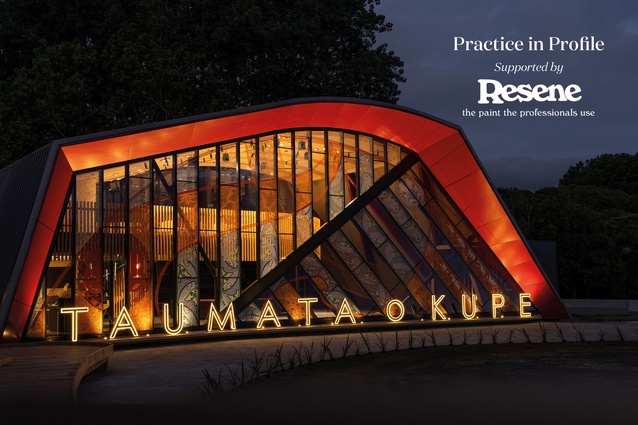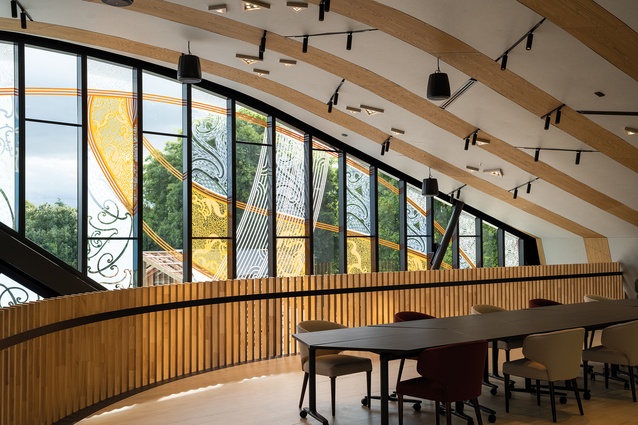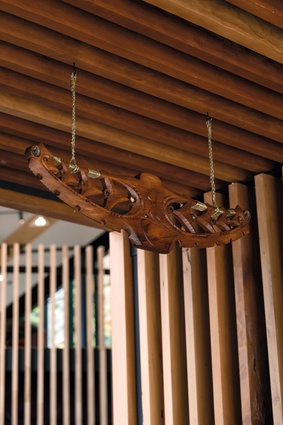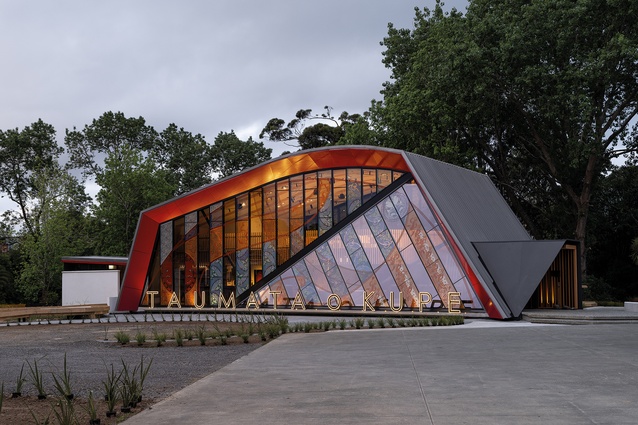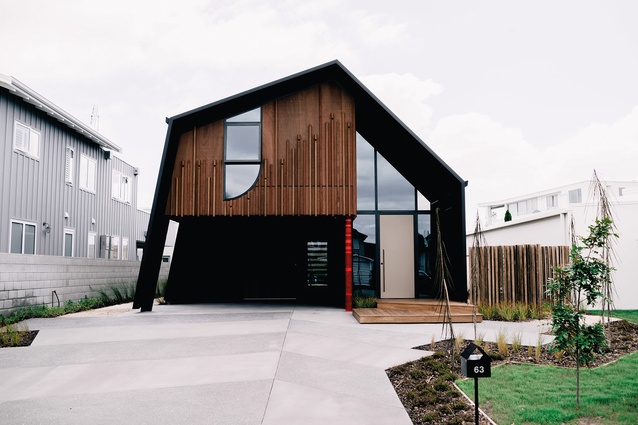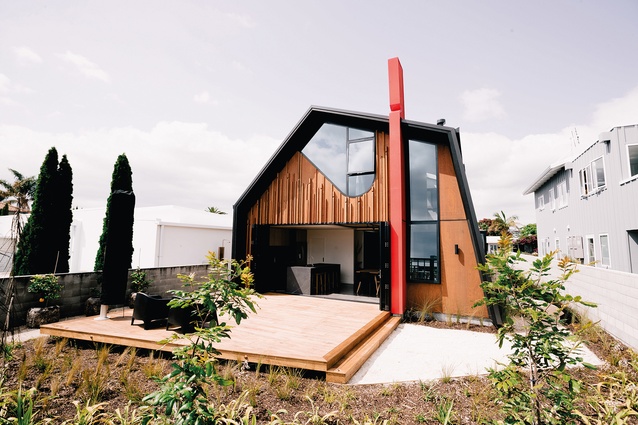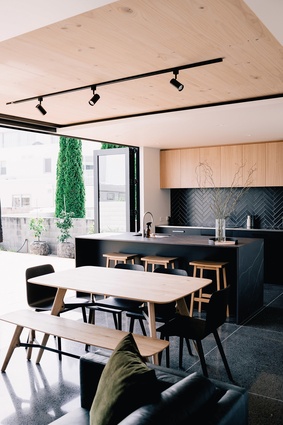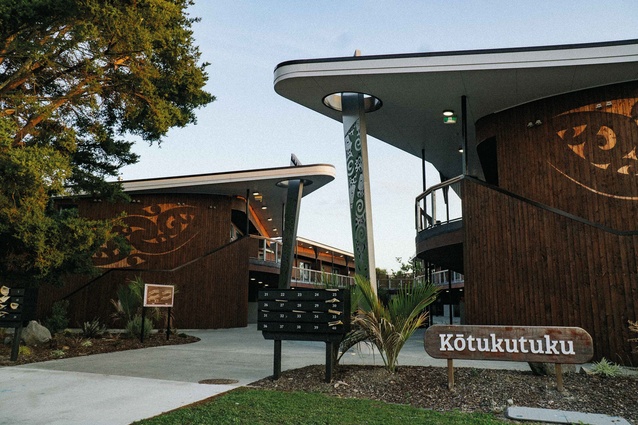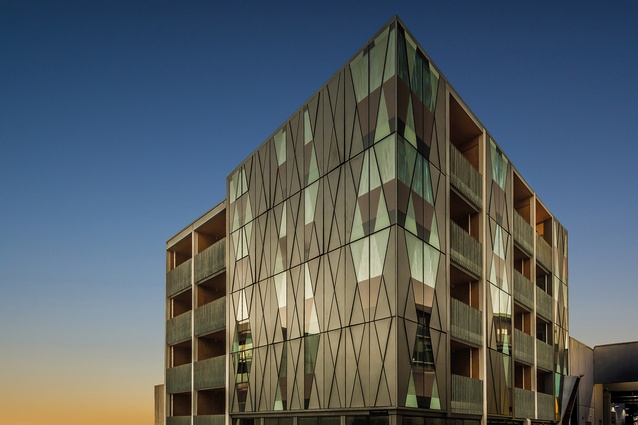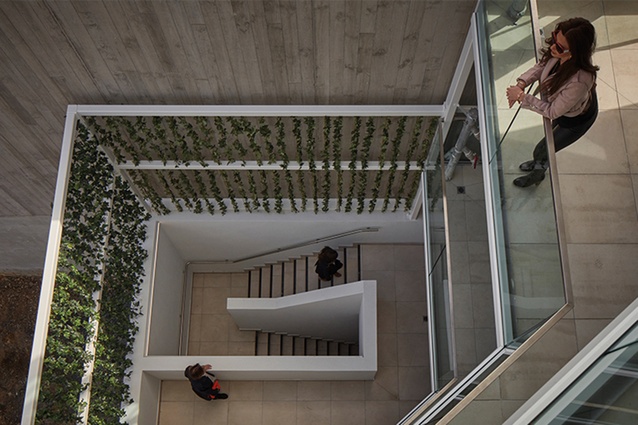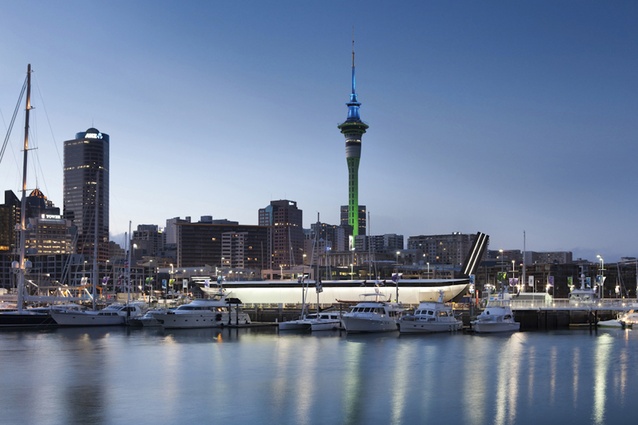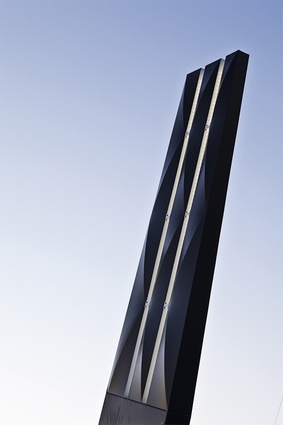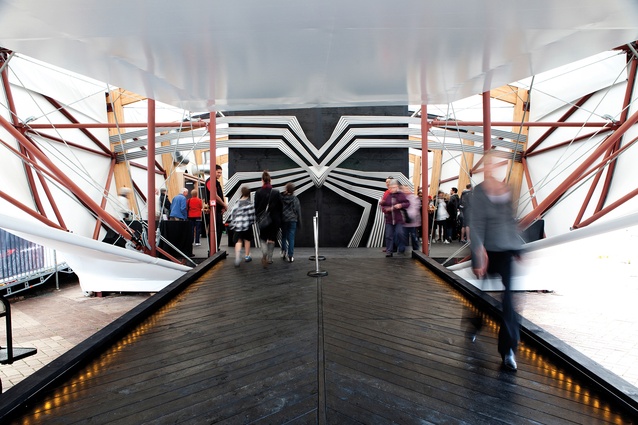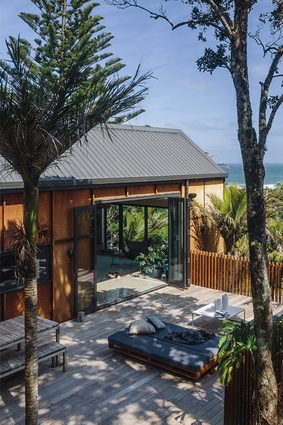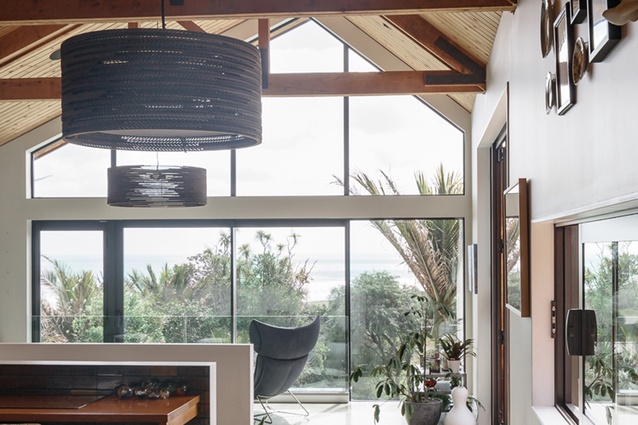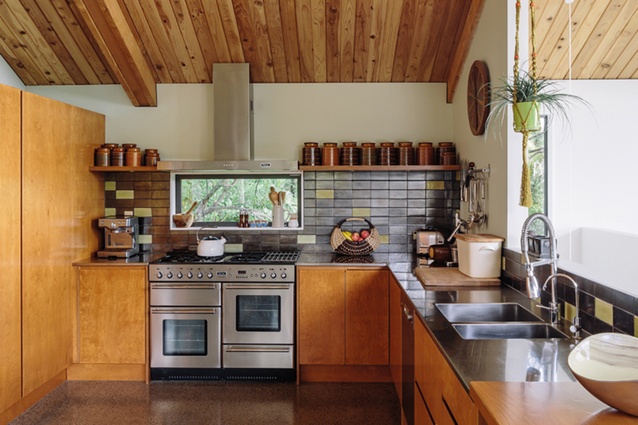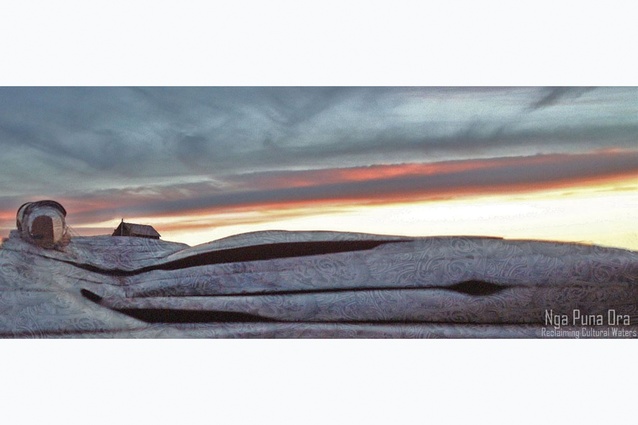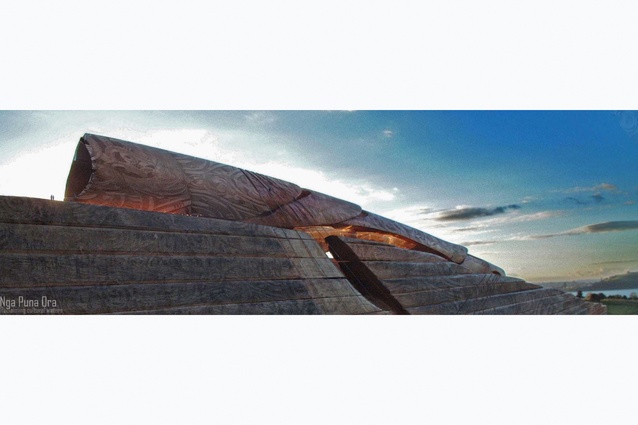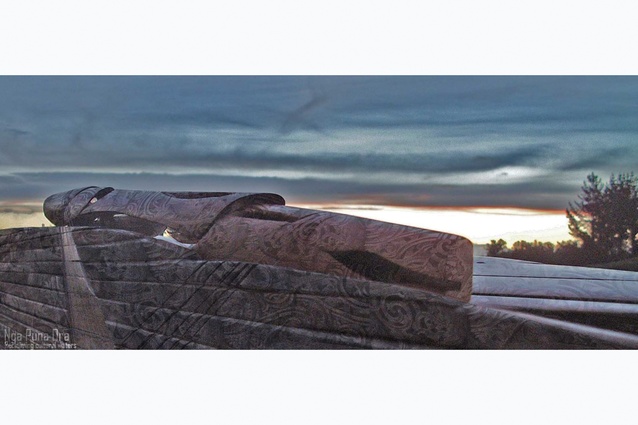Haumi ē! Hui ē! Tāiki ē! Becoming great ancestors
TOA Architects’ founder Nicholas Dalton has a vision that, by 2040, all its architects will be fluent in te reo Māori and all other firms will have overhauled their policies and practices to ensure te Tiriti is embedded. That way, TOA’s rangitahi will be able to go to any practice and feel safe and valued.
E noho ana ahau ki tōku taumata whakamarumaru o Ngōngōtahā, taka rawa iho ngā wai o Utuhina, e piri nei ki te taha o Pukeroa Oruawhata. Ka huri taku titiro ki Tiheia, e aru kōrikoriko ana ngā wai ō Awahou. E ai rā taku titiro ki nga wai karekare i a Rotorua-nui-a-Kahu. Nō reira, piki mai, kake mai rā! Hōmai te waiora ki a ahau kia tūtakitaki waiora, tūtakitaki nahanaha mai e! Whakaamohia te ao ki uta, whakangāwaritia te ao ki tai! Kei ngā kākahi whakairoiro, kei ngā rake pīngao, huri noa, huri noa, nau mai, haere mai, whakatau mai rā! Whakatau mai rā ki runga i te ki ā ngā mātua tupuna: nō te hōhonutanga ō Te Korokoro ō Te Parata, nō Te Whare Hukahukanui ā Tangaroa, ka puta, ka ora ai te waka kaitā, te waka roa, te waka takere nui ko Te Arawa tērā! Nō ngā waikarekare ā Te Arawa i kawea mai ōku tūpuna, ōku mātua, ā, heke iho mai ki tēnei pīpī manu mākarokaro, tēnei ihu hūpē nei. Nō reira, ka tupu ki roto, ka tupu ki waho, ka tupu ki te wheiao ki te ao mārama! He whakatakotoranga ōpaki, kupu pakupaku ēnei e waihanga ana i runga i ōku nei tirotiro haerehanga atu ki te takere ō taku ao whaihanga whare nei. Ka noho ngātahi ki taku whao, he ao hou kei tua e tūmanakonuitia ana e tātou. Nō reira, me whiria te taura here tangata, whiri iwitunatia, kia purutia ai tātou katoa. Ko te urupounamu a Te Arawa nei e mea ana, mā te aha ka rongo te wai ki te aroha o te tangata? Ā kāti, e pātōtō ana te iwi kaihoahoa i runga i te whatitoka o te whare māramatanga? Anā, mā te whakatakoto tūāpapa Māori e whakarauora tonu ai te piringa kei waenganui i ā tātou! Nō reira, hou mai, kuhu mai, tomo mai! Tihei mauri ora!
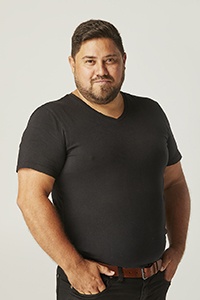
I founded TOA 12 years ago on my own, after reaching maximum frustration with how projects and anything to do with te ao Māori were being handled. I wanted the practice to be underpinned by te ao Māori and, as such, TOA has two fundamental meanings. In te reo Māori, it means strength, bravery and cutting new ground. The name is Tāmaki Makaurau Office Architecture, referencing Tāmaki Makaurau as the earliest name for the Auckland region. It roughly translates to land of many lovers. We have taken that one step further to mean wherever you may love. We have discovered, over time, that our clients — of no matter what background — have to have a deep love for the whenua. We highlight the vast difference between land and the kupu whenua. Land is a commodity: chopped up like cake and sold to the highest bidder. Whenua also means the placenta in Māori and it is tradition for Māori to bury the placenta in the whenua; it is returned to Papatūānuku — the Earth Mother.
In the evolution of TOA, there are three main periods, past, present and future, or, as the whakatauāki goes, “Kia whakatōmuri te haere whakamua – I walk backwards into the future with my eyes fixed on my past”.
PAST
My father, Lloyd Dalton (Pākehā — British/Scottish/Danish), was a senior draughtsman at Hocking and Verrall. My mother, Kathryn Dalton (Te Arawa, Ngāi Tūhoe), owned and operated three childcare centres: one in Cambridge and two in Rotorua. Both of these factors had a profound effect on me — firstly, architecture was always going to be my field and, secondly, I was always going to start something and whatever I did was going to be brave and of great social consequence.
Fast-forward to finishing at architecture school where, in 2003, I was awarded as the top design student in Aotearoa, the second Māori in the 80-year history to receive the award. I really should let that go but the important thread there was that it was the year I learned about the occupation at Bastion Point Takaparawhau in 1978, which was heartbreaking stuff. In 2002, I tracked down Ngāti Whātua rangatira Joe Hawke, who led that occupation, and had many kōrero about creating something that would bring a sense of healing to the whenua. Without knowing it, I was entering my first co-design process; I did so without a clue of how it would go but it ended up being a stunning piece of architecture. It is still one of my career ambitions to have it built, so the next step is to make a giant scale model and have it installed at the Tate Modern in London.
Fast-forward another two years and I returned from Europe and worked for two practices. One project was a ‘Mediterranean garden’ at a Takapuna apartment complex and, in retrospect, I didn’t realise how disturbing that really was. I witnessed a developer strip a project back so badly to gain a better profit margin that it has since been described as a prison.
PRESENT
TOA is now 30-plus strong and with more than 50 per cent Māori employees, as well as those with Scottish, British, Dutch, Tongan, Rarotongan, Samoan, Chilean and German whakapapa. We are a proud signatory to the Diversity Agenda Accord. We take a special interest in the recruitment and retention of Māori within our field and are part of a collective shaping the NZRAB pathway to registration in te reo Māori. Within the last year, we have opened an office in Waiariki, adding to our satellite office in Te Whanganui-a-Tara and our main headquarters in Tāmaki Makaurau. In the next few years, we have aspirations to open offices in Te Tai Tokerau and Te Waipounamu.
Many iwi are now powerhouses, both culturally and economically, with a number requiring that architectural services are delivered by Māori. With this comes the challenge of ensuring tikanga is kept at the forefront of all that we do; this provides a constant focus for our team, with personal tikanga plans to be developed for all staff members and a longer-term ambition to have them all fluent in te reo Māori by 2040. We had an incredible experience recently when a lovely Australian woman of Irish descent was so moved by our mihi whakatau she responded with an ancient Irish waiata — a beautiful exchange of culture.
TE TAUMATA O KUPE
Client: Te Mahurehure Marae Department of Internal Affairs Education and Conference Facility
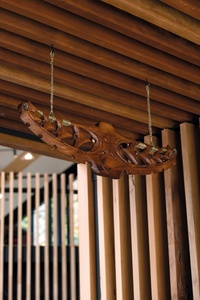
The long overdue recognition that mātauranga Māori is valid in the scientific and Western realms is encapsulated and proven in this whare. It is the physical manifestation and acknowledgment of Kupe Nuku, who discovered this land more than 1000 years ago — 600 years prior to Tasman and 700 years before Cook. Kupe used nothing but celestial navigation and knowledge of the taiao to confirm his path. Only five tohunga still know the ancient kōrero around celestial navigation and how to undertake this and one of these tohunga is Matua Rereata Makiha, who is a descendant of Kupe and has agreed to teach our tamariki about the great journey of Kupe. Te Taumata o Kupe was proudly opened by Christine and John Panapa as well as iwi elders and government ministers in November 2022 and is a real flagship architecturally on the use of pūrākau and mātauranga Māori. The TOA project team worked tirelessly over three years to deliver this incredible project.
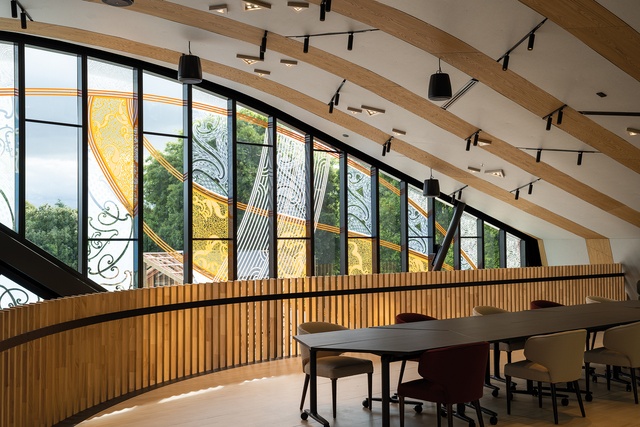
Concept Nicholas Dalton; project architects Daniel Lewis and Grant Bulley; artists/narrative Matekitātahi Rawiri and Rereata Makiha; architectural team: Kaitlyn Gruber, Tim Merkens, Darrell Turner, Marshall von Schmidt Berry, Matangireia Yates-Francis and Diego Silva.
MAUNGĀRONGO
A statement of Tino rangatiratanga and healing the past
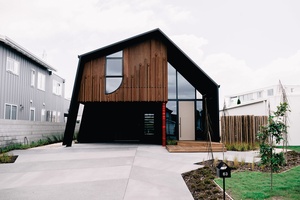
Prior to 1828, all of Ōtūmoetai in Tauranga Moana was a Ngāi Te Rangi stronghold; this iwi’s pā is down the road from the Maungārongo house site. The great rangatira of this iwi is a tipuna of the client Shad Rolleston. This was a powerful moment in history because 1828 was one of the years that Ngāpuhi raided most of the North Island, seeking utu for past digressions. Ngāpuhi stormed the pā but the iwi was one of the few that, despite being out-gunned, were successfully able to defend their pā. Fast-forward to 2017 when, ironically, an introduction from a Ngāpuhi architect at Jasmax to a Te Arawa architect at TOA led to the design and documentation for the NZIA Local Award-winning project Maungārongo.
This house is loaded with metaphor: in particular, its 12-metre-high red contemporary pouwhenua, which acts as a statement of rangatiratanga in an otherwise reasonably beige environment. The overall form of this whare pays homage to koro Mauao, as he is affectionately known by the tangata whenua, more commonly referred to as Mount Maunganui. The driveway is articulated to reference the moana and to pay homage to the last wharenui from the Ōtūmoetai pā, which was dismantled and rafted over to Matakana Island. The windows to the south and north reference waka, as does the roadside entrance, which is a signature TOA hoe waka or paddle tip. The battens on the cladding reference the pātūwatawata or palisading of the old pā.
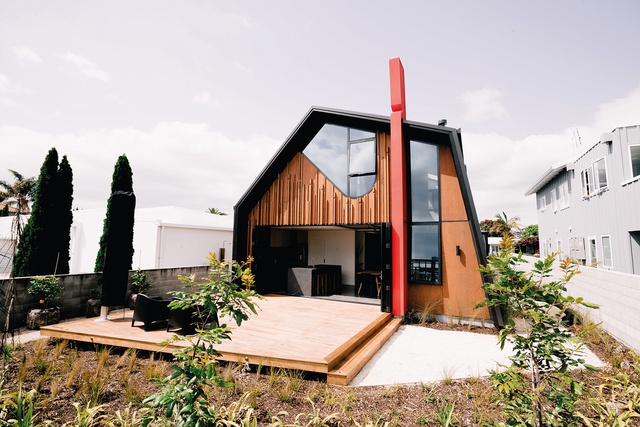
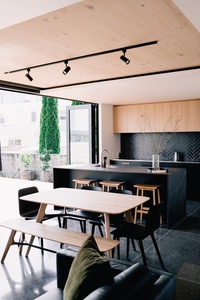
The interior also holds specific metaphoric meaning to the site’s past, present and future. The formal entry to the house is on the opposite side from the road — this is a very Tauranga Moana marae tikanga. Most, if not all, Tauranga Moana marae face Mauao and the moana, as this is predominantly how they were approached by waka from the ocean side. In the modern day, cars have been introduced so, often, the car park is at the rear of the marae and you enter from down the side and around the front for a pōwhiri; this has been mimicked at Maungārongo, again tying in local iwi tikanga and history to modern architectural practice.
This whare has become a real statement in Tauranga and we have been told many people divert on their way to mahi each day just to drive past it. Maungārongo is a statement of pride for Ngāi Te Rangi, for a father, husband and tribal leader and also a symbol of healing of past wounds.
Concept design Nicholas Dalton and Dane Faesen Kloet; project architect Daniel Lewis; architectural team Tim Merkens, Tara-Lee Carden, Tegan Ingram and Kaitlyn Gruber.
MAHITAHI KĀINGA
Client: Mahitahi Trust
Budget: $15M - 41 self-contained units
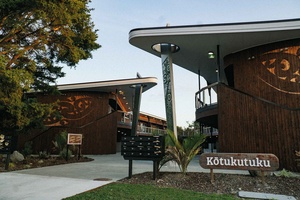
Kōtukutuku — Mahitahi Kāinga is a project close to our hearts. All of TOA have worked on or touched this project over the years; it won an NZIA Local Award and was short-listed for the National Awards. It was the first project where Te Ari Prendergast’s sketch was, in fact, the design, encapsulating all that it needed to in one simple but beautifully articulated drawing. The kuia and kaumātua who viewed it fell in love with the concept and narrative, which was manifested in the project from start to finish. Every consultant on that project was at the pōwhiri by Mahitahi and we have never seen anything like it since. We were blown away by the manaakitanga of Mahitahi, its staff and the tāngata whaiora who reside in the space we created.
There is something powerful about a rōpū of 120-plus singing a waiata and then explaining over a hākari how important this wāhi is to them. In the 30 years Mahitahi Trust has been providing residential and wraparound services to whānau in need, this papakāinga is the first they have had designed and built for them. It is a place for healing and recontextualises what an urban papakāinga looks and feels like. We want to acknowledge how brave our client was on this project. They say they weren’t brave but, after practising architecture for a number of decades, we know that Kōtukutuku is a cutting-edge project, referencing our past and articulating it in a new-age way.
Concept Te Ari Prendergast; project lead Craig Wilson; documentation Tim Merkens, Marshall von Schmidt Berry, Darrell Turner, Tegan Ingram, Diego Silva and Nathan Stowell.
ARIĀ APARTMENTS
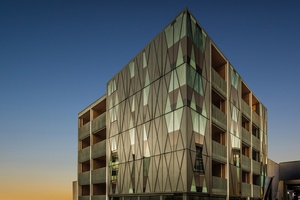
This, our first NZIA Local Award-winning project in 2018, was 20 apartments on a tight site of 542m2 in the middle of Ponsonby. Our client, Legacy Property, wanted to create an affordable offering for young people (some apartments cost less than $500k). I recall the design panel having a go at us, saying, “What minimum standards are you using?” and our rebuttal was simple, to trust us, “unless you want Vinegar Lane to be empty, with the entire place owned by land bankers who don’t live there”.
Legacy owner Gary Gordon was well travelled, having been to places like Japan and Scandinavia, where living in 30m2 is not uncommon. The façade of this project is one we’re very proud of — Thermosash did an incredible job on the geometric interpretation of a tāniko pattern called pātiki, which symbolises a school of flounder swimming in formation. It also symbolises community coming together. If you go to Vinegar Lane, you’ll see those who live in this building are not the usual demographic in what are usually multi-million-dollar apartments; we are proud of this fact.
Concept James Daulton; project lead Jeremy Chapman; technical Darrell Turner, Marshall von Schmidt Berry and Victoria Streeter; site Craig Wilson and Daniel Lewis.
WAKA MĀORI
Client: Te Puni Kōkiri - Ngā Whātua Ōrākei Project
Value: $2M
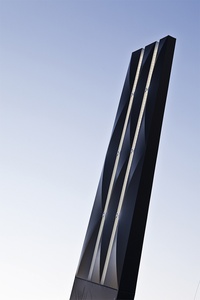
This was one of TOA Architects’ original legacy projects and a huge thank-you must go to co-creators Renata and Ngarimu Blair and the lead sponsor Sir John Key (Prime Minister at the time). He nominated from his discretionary fund that the Waka Māori concept be born to help host the 2011 Rugby World Cup. This incredible project had more than 400,000 visitors in the 17 days it was open during the Rugby World Cup.
There were many things of note with this project. Firstly, tikanga was very important in its inception. Renata Blair spoke to the great waka revivalist, Sir Heke Busby of Ngāpuhi, to ensure utilising a waka taua was ok and his response was: “Once upon a time, our people did karakia and cut down a massive tōtara to make waka, which was the cutting-edge technology of the time. What you are proposing honours that tradition, so go ahead.” The Waka Māori was largely built in a huge industrial shed in South Auckland, owned by James Kirkpatrick. Even though the shed was massive, the waka taurapa (stern post) couldn’t fit, at over 20m in the air. The 792m2 waka-shaped pavilion was built to a permanent standard in 12 days.
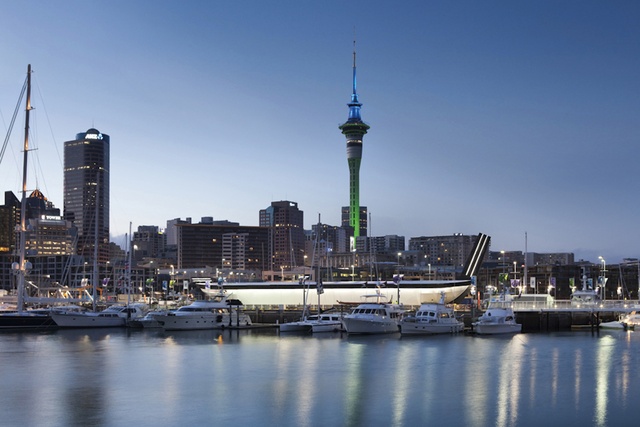
The plan was again influenced by tikanga, with no food or beverages being served inside the waka. You entered the pavilion through an access ramp at the front, which was the tongue of a stainless-steel interpretation of Tāne Māhuta. The front of the waka was a 17m steel cantilevered space frame, painted red ochre to pay homage to the whare revival movement of the 1960s.
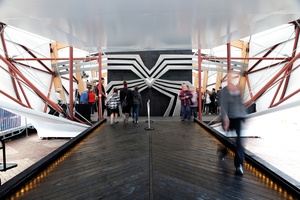
Inside, was 100 years of Māori rugby and an incredible display of every Māori All Black who ever played, including trophies and memorabilia. Legends like Sir Buck Shelford and Ron Cribb could be seen at the waka throughout the festival. Heading towards the stern was a large gathering space where iwi business leader kōrero were held and, to top it off, in the rear of the waka, Sir Ian Taylor’s team created a 3D experience of Māui and his brothers fishing up Te-Ika-a-Māui.
Project team: Stirling Burrows, Ben Barter, Cameron Aitken, Anthony McBride, Harry Klein and Tracy Davis.
MOTUTARA
Muriwai house
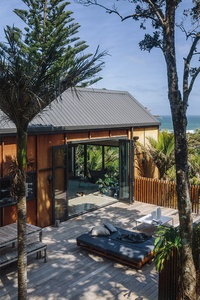
I was only 27 when I received an email from Simon Leitch saying that he and his wife Claire loved ‘The Piha Cafe’ and wanted to know if I would design their house. It was an honour to be trusted with the design of the home — their biggest asset. The ingoa of the road this house sits on in Muriwai is Motutara — ‘tara’ being peak or hill and ‘motu’ to sever. The road itself severs the Muriwai hill from the low-lying beach. The diagram of the plan repeated this, with two wings to the home.
The first wing is the nest, housing the bedrooms. It is ‘ngahere’ or tree house, and is elevated amongst the canopy by pole and rope structures, which pay homage to waka-building traditions of old. The second wing, ‘Zeeland’, is the public one, acknowledging the 1642 first European discovery of Aotearoa. (Note, this date is some 642 years after Kupe Nuku came here). The project’s balustrade is the pātūwatawata (palisade) but inverted, referencing the palisades of the various pā of Te Kawerau-ā-Maki. Its inversion is a nod to this whare being one of rongo: a house of peace and safety.
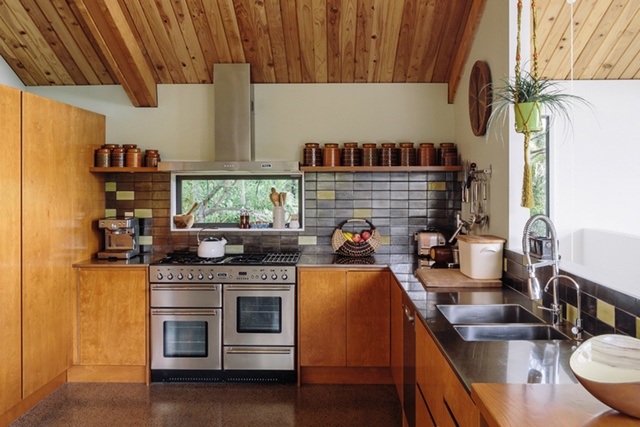
Concept Nicholas Dalton and Gary Marshall; design Ben Barter and Gaetan Girard; documentation Cameron Aitken.
NGĀ PUNA ORA
Waters that bring life and well-being
Takaparawhau Bastion Point
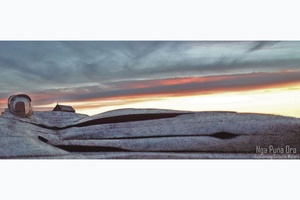
This was my final-year project at university and it gave me a taste of what I saw the future of architecture to be — a dialogue between architect and iwi and a profound connection between the future and the past by honouring the pūrākau in a contemporary way. I approached this project as co-design before I understood co-design to be a thing. I tracked down the late, great Ngāti Whātua rangatira Joe Hawke, the leader of the 1978 504-day occupation of Bastion Point. The year 1978 was a pivotal moment in Aotearoa history and my birth year and, watching the historical footage as a 20-year-old student with an architectural career in front of me, was harrowing and is still part of what drives me to this day. This country has a bright future but we need to own the mistakes this nation has made, particularly at the hands of the Crown, with Māori having long suffered the effects. However, I believe this is the age where we can continue to try to make things right.
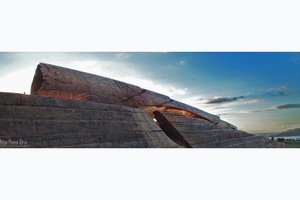
Ngā Puna Ora was a project that sought to bring healing to an almost unforgivable series of events. It was named by Rangīhiroa Panoho, Professor of Māori Art History at Auckland University. The name translates to ‘waters that bring healing and well-being’, with its primary function being twofold. Through a natural process of Wai Māori, it purified the stormwater of Tāmaki Makaurau before being released to the Waitematā below. Three giant, terraced pools sitting below three giant suspended hydroponic pods would grow rongoā Māori medicinal plants for local and international export; the plants would be processed on site. Both functions reinforce the metaphoric healing aspects of the project.
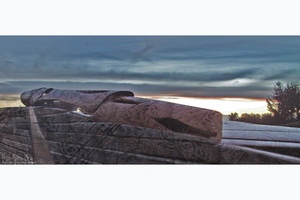
The building, as shown in the image with a whakairo pattern projected onto it, references the carvings on the waharoa to Tumutumu whenua up on Takaparawhau. The idea is that the skin or façade of the project is blank and, as mihimihi is chanted, the images projected on the façade could change from haukāinga to manuhiri. This project was my first carving. My father sourced the mangeao timber, an acient species of rākau, which is near extinction.
In closing, it is one of my life ambitions to have a giant model of Ngā Puna Ora on display in the Turbine Hall at the Tate Modern in London and, more importantly, built to full size, as intended, at Bastion Point Takaparawhau, as nā rangatira Joe and Bob Hawke wanted.
Nō reira, ko te kawa nō runga, ko te kawa nō raro! Ko te kawa nō roto i ā TOA! Tairangatia te kawa! Ko te kawa whakahikohiko, ko te kawa whakaitaita! Nau mai rā te kawa, whakamau ai! Tūturu ō whakamaua kia tina!
Haumi ē! Hui ē! Tāiki ē!
Nicholas Dalton is an NZRAB-registered architect and the founding director of TOA Architects. He is a trusted advisor to manawhenua across Aotearoa and he and his team strive to ensure positive outcomes for iwi and the communities they serve. The practice’s mantra is that all projects need to provide strong environmental, social, cultural and economic returns.

